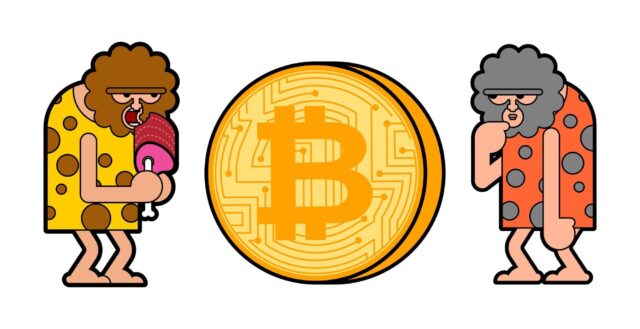
Cryptocurrency, a digital form of currency that relies on cryptography for secure transactions, has revolutionized the world of finance and technology. Since its inception, cryptocurrency has witnessed significant evolution, transforming from a niche concept to a global phenomenon.
Over the last few years, cryptocurrency has become a popular topic of conversation and a great way to invest. Not everyone knows how to buy and sell cryptocurrencies yet, but it is about to change soon. So how did this new technology attract so much attention? Let’s find out in this article!
What Makes Crypto so Great?

Digital currency is usually anonymous, decentralized, and safe. There are, of course, some exceptions to that, but if you follow all the safety rules, there should not be any problems. Another big advantage of cryptocurrencies is that the transactions are much quicker and cheaper than regular bank transactions.
When did the History of Crypto Begun?
The first prototype of a virtual currency was created in 1983. However, the real changes started when Bitcoin was introduced to the world in 2009. Its creator, someone under the pseudonym of Satoshi Nakamoto, mentioned it for the first time on a cryptography forum in 2008.
Bitcoin is both a public ledger blockchain and a cryptocurrency. At first, Bitcoin was used only by a small group of enthusiasts. Over time, more and more people started noticing it.
In 2010, its price grew from a few cents to 1 USD. BTC kept growing, and the first cryptocurrency exchanges started to appear. In 2013, Bitcoin was briefly traded for $1200 and then its price fell after some market turmoil.
In 2010, a programmer named Laszlo Hanyecz decided to order pizza. He paid 10 000 BTC for two pizzas, which was the equivalent of $41 back then. At the time of writing this article, the price of BTC is $26 233 and its ATH was $68 789.
How did Bitcoin influence the industry?

The popularity of Bitcoin has given a push to thousands of cryptocurrencies that got inspired by this blockchain technology and followed its steps. Alternative assets are known as altcoins. At the beginning, they used Bitcoin’s source code. The first altcoins were created in 2011 and called Namecoin and Litecoin. Every alternative asset had a goal to improve the original idea of Bitcoin. Some of them are doing better at it: there are many successful cryptocurrencies like ETH (Ether / Ethereum), ADA (Cardano), and XRP (Ripple).
Ethereum was first launched in 2015. The idea behind Ethereum was to create a more universal blockchain, which would be able to support not only cryptocurrencies, but also dApps, smart contracts, and DAO. This later led to the creation of decentralized exchanges.
Another type of cryptocurrency is stablecoins. These are the assets backed by fiat currencies or commodities. The most famous example of such assets is Tether (USDT). It is 80% backed by the U.S. dollar.
Currently, there are over 10 000 in the world, but not all of them are successful. Whenever a new project appears, its creators use different ways to raise the funds to promote it. There are a few ways to do it: Initial Coin Offerings (ICOs), Initial Exchange Offerings (IEOs), and many others.
Initial Coin Offerings (ICOs) and Tokenization

The introduction of Ethereum also led to the rise of Initial Coin Offerings (ICOs). ICOs allowed startups to raise funds by selling their own cryptocurrencies or tokens, which represented ownership or utility within their respective ecosystems. This fundraising method experienced a significant boom in 2017, although it later faced regulatory scrutiny due to fraudulent activities.
Cryptocurrency Exchanges and Trading
Cryptocurrency exchanges played a crucial role in facilitating the buying, selling, and trading of digital assets. These platforms provided a marketplace for individuals and institutions to trade various cryptocurrencies, contributing to liquidity and price discovery. Major exchanges, such as Coinbase, Binance, and Kraken, emerged as prominent players in the global cryptocurrency market.
Mainstream Attention and Media Coverage
As the cryptocurrency ecosystem grew, it captured mainstream attention and garnered media coverage. Bitcoin’s meteoric rise in value during 2017 attracted widespread interest and speculative investment. Media outlets started dedicating significant coverage to cryptocurrency, and renowned institutions and influential figures began discussing its potential impact on the financial landscape.
Regulatory Challenges and Government Response
The rapid growth of cryptocurrency raised concerns among regulators and governments worldwide. Issues related to money laundering, fraud, and consumer protection prompted authorities to develop regulatory frameworks. Some countries embraced cryptocurrencies, creating favorable environments for blockchain and digital asset innovation, while others implemented strict regulations to mitigate risks.
Cryptocurrency’s Role in Financial Innovation

Cryptocurrency has become a catalyst for financial innovation, pushing the boundaries of traditional systems. The concept of decentralized finance (DeFi) emerged, offering financial services such as lending, borrowing, and yield farming through smart contracts and blockchain technology. DeFi protocols aim to create a more inclusive and transparent financial ecosystem accessible to anyone with an internet connection.
Blockchain Technology Beyond Cryptocurrency
Beyond its application in cryptocurrency, blockchain technology found applications in various industries. Its inherent qualities of transparency, security, and immutability attracted interest from sectors like supply chain management, healthcare, real estate, and voting systems. Blockchain’s potential to revolutionize these industries by eliminating intermediaries and improving efficiency garnered significant attention.
Security and Privacy Concerns

While cryptocurrency offers enhanced security through cryptography, the industry has not been immune to security breaches and hacking incidents. Cryptocurrency exchanges and wallets have faced vulnerabilities, leading to significant financial losses. Additionally, the tension between privacy and regulatory compliance has become a point of debate, as governments and law enforcement agencies seek ways to combat illicit activities.
As you can see, the history of cryptocurrency is very interesting. However, digital assets are only at the beginning of their journey. The future of cryptocurrency is going to be full of new inventions and opportunities.
Do your own research and start investing in cryptocurrencies the smart way, or enjoy buying and selling cryptocurrencies to make a profit. The world of crypto is very exciting, so learn as much as you can about it and start growing your capital!












